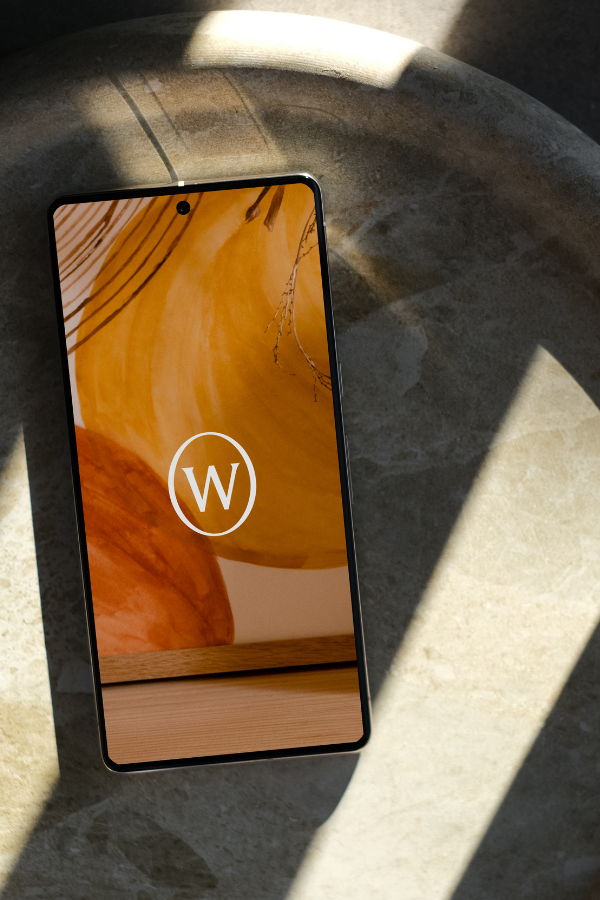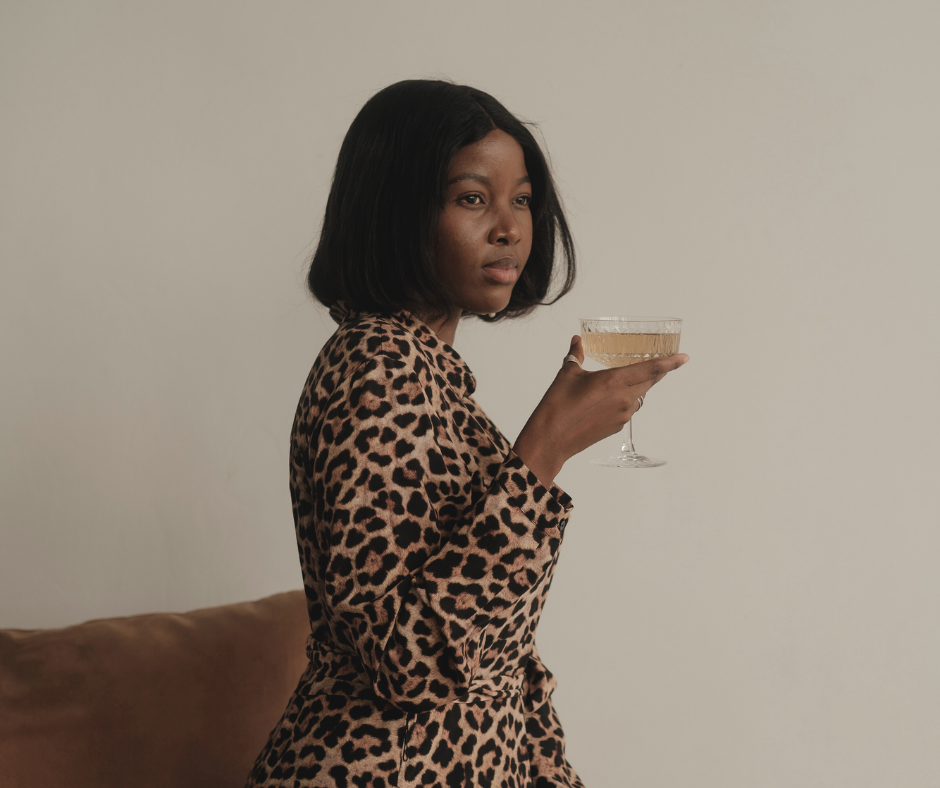
How Do I Know If My Portfolio is Strong Enough to Strike Out on My Own?
Summary
A strong portfolio isn’t measured by volume. It’s measured by clarity. A handful of well-explained projects can communicate your thinking far more effectively than a long gallery with no context. Clients want to understand how you make decisions, not how many rooms you’ve photographed. Pay attention to the patterns in your work and how clients already treat you. If they trust you, defer to you, and rely on your eye, you’re likely far more ready than you think. Small projects can carry real weight when you explain the problems they solved and the choices you guided your clients through. A portfolio grows into itself over time, so don’t wait for perfection before taking the next step.
Reflection Questions
When I look at my portfolio, am I judging the size of my projects more than the strength of my decision-making?
Do my captions and explanations help potential clients understand what I changed and why, or am I leaving too much unsaid?
What patterns in my recent work suggest that clients already trust me at a higher level than my current role acknowledges?
Journal Prompt
Choose one project in your portfolio — even a very small one — and write out the story of what you walked into, what the client struggled with, and how you led them through the decisions that shaped the final space. Describe the constraints, the tradeoffs, and the moments when your judgment mattered. Once you’ve written it out, consider how you might translate that clarity into the way you present your work online.
Is your portfolio strong enough to communicate your style and attract the right clients to your brand-new firm if you decide to finally strike out on your own? Most designers assume they need a very full portfolio before they can even think about independence. They picture the polished body of work established studios have: stunningly styled whole homes, complex renovations, and crystal clear photography that looks like it belongs in a showroom catalog or a copy of AD. But that’s not how most firms start out. Designers usually make the leap with a mix of smaller projects, a few special rooms, and work that reflects their thinking more than their styling. You begin with what you have, but that might be quite a bit more than you realize.
So, are you ready? We asked Melissa Grove and Laura Umansky for their insights on the subject earlier this week. If you’re new here, Melissa and Laura are the cofounders of DesignDash and long time leaders inside Laura U Design Collective. They have watched plenty of designers navigate this exact turning point. They understand how uncertain it feels and how often people underestimate what they already have.
When It Comes to Presentation, Poise Matters More than a Packed Portfolio
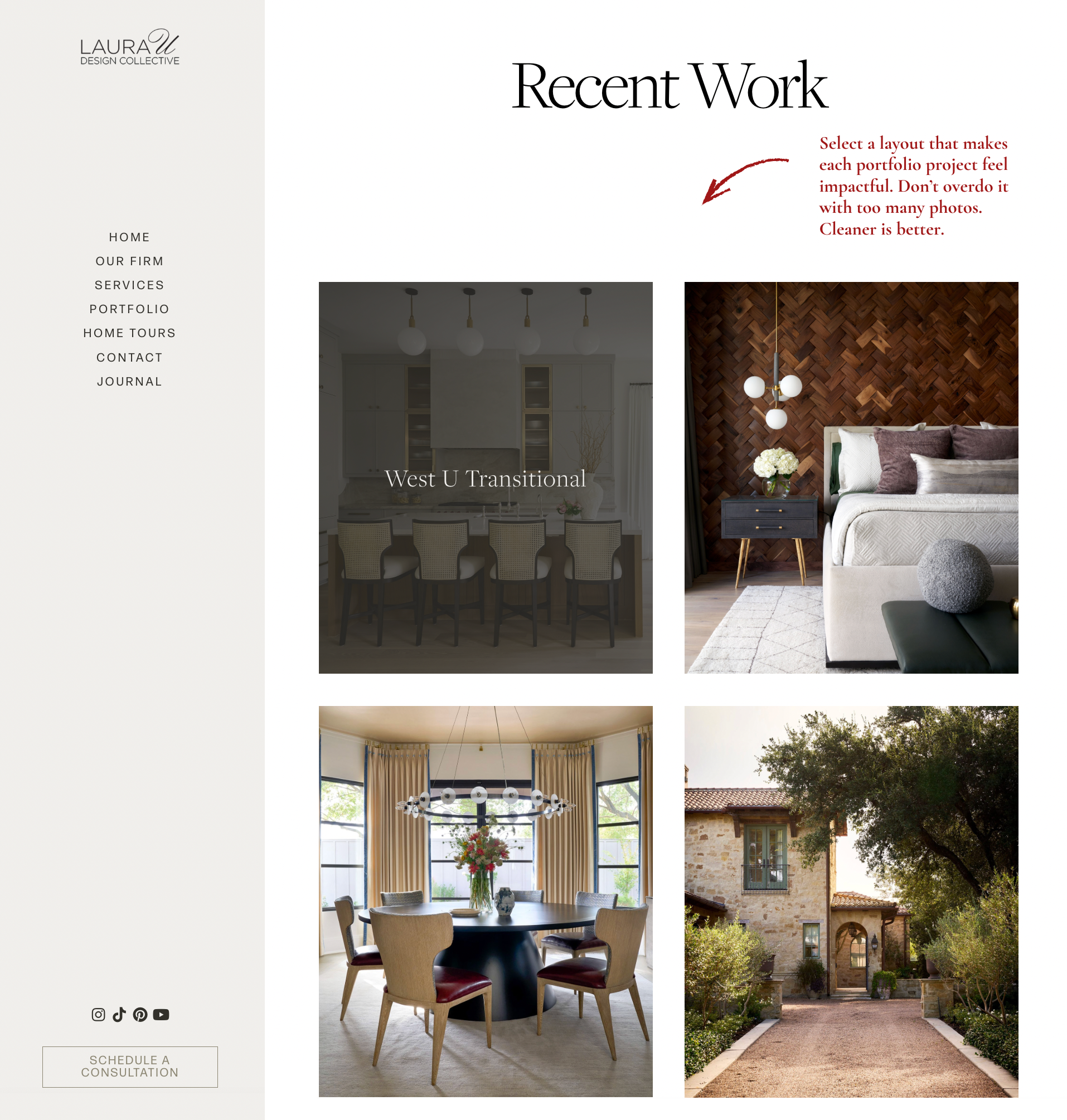
A lot of designers get hung up on the idea that their portfolio has to look a certain way before they’ll be perceived as legitimate. Yet when you talk to people who’ve worked with dozens of designers at different stages, that’s not always the case. Melissa has seen designers with degrees, designers without them, designers with twenty years of experience, and designers with two. She’s seen people launch from fully branded sites and others launch from nothing but an Instagram grid. Success does not equal volume of work produced.
“It’s cliched, but confidence and grace under pressure. I’ve known designers with degrees and without, some with 20 years of experience and others with 2, some with polished websites and others working from an Instagram profile. Each one of them is successful because they can speak to a client with ease, assure them that their dream design is possible, and handle any problems behind the scenes successfully.”
Clients notice how you communicate; they don’t care nearly as much about whether you’ve photographed fifteen kitchens or three. They pay attention to whether you explain things clearly and kindly, whether you stay steady when a planned part of the project goes sideways or the client changes their mind. Do they feel calm when you walk into the room or do you put them on edge? Your portfolio backs that up, but it certainly doesn’t replace it.
Fuel your creative fire & be a part of a supportive community that values how you love to live.
subscribe to our newsletter
*please check your Spam folder for the latest DesignDash Magazine issue immediately after subscription

Pay Attention to Patterns
Designers often expect a singular “Aha!” moment that proves they’re ready to lead their own studio or scale the firm they already have. They’re looking for a milestone project, a big reveal on socials, or recognition from someone they admire. Unfortunately, most of us are never “struck by lightning.” We have to pay attention to patterns to know whether we’re ready to advance.
As Laura recalls…
“There wasn’t one magic project. It was noticing a pattern. Clients were trusting me with bigger scopes, hiring me again, and referring me to their friends. That told me they already saw me as the expert. The first full-home project I handled end-to-end solidified it. Managing the entire design process myself gave me the confidence that I was ready to build a firm around my vision.”
Designers often wait for a dramatic milestone before they consider going out on their own, yet what usually happens is closer to what Laura described. People begin treating you like a leader inside a project long before you officially step into that role.
You’re running point on a renovation even though no one technically labeled you that way. You’re fielding decisions because people defer to your eye. You’re solving problems that would normally fall to the firm owner. And one day you realize you’ve been doing the work of a firm owner inside someone else’s studio. Your portfolio might not be ready, but you are.
What Your Portfolio Actually Needs To Communicate
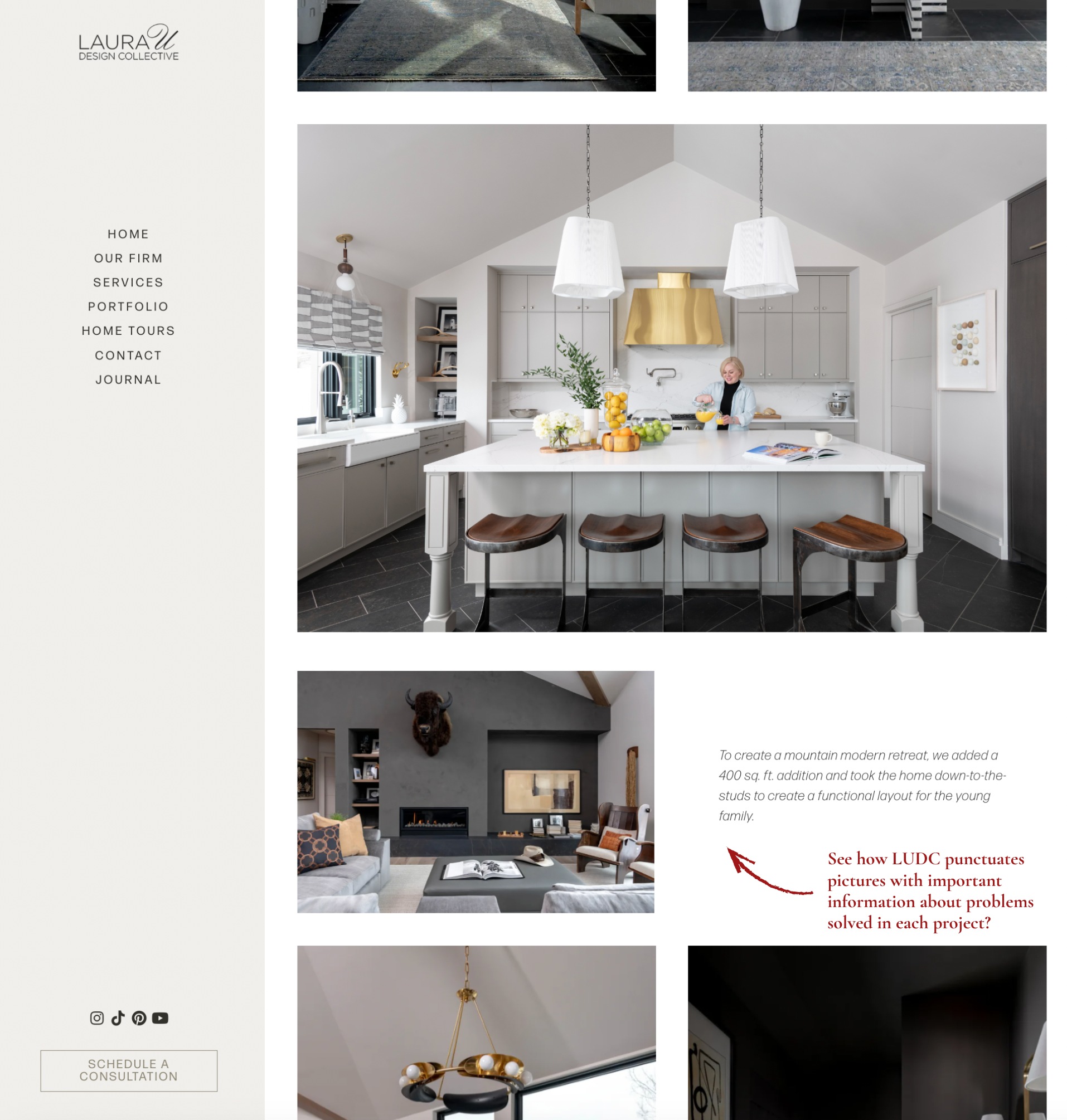
But back to our original question: how do you know if your portfolio is strong enough to actually attract clients? Your portfolio does not have to be extensive. It needs to be clear. A few projects that show your decision making can be more convincing than a long gallery with no explanation. At this pivotal juncture in your career, you absolutely need to include captions or call-outs alongside every portfolio project. When clients look at your work, they want to understand what you changed, why you made those decisions, and how you think through a space. They do not expect perfection. They expect honesty and clarity.
Fuel your creative fire, thrive with support from peers, & make 2025 your firm’s best year yet!
JOIN THE DESIGNDASH COMMUNITY

A functional kitchen you reworked with a tricky footprint can be much more compelling than a larger home with fewer real-life constraints. The living room where you solved an architectural challenge that hampered the client’s ability to entertain is valuable because it shows how you approach problems. These kinds of projects signal that you know how to evaluate a space and guide a client through improvements.
Sometimes designers hesitate because they worry the variety in their portfolio looks inconsistent. But inconsistency shows adaptability when communicated properly. It shows how you respond to different clients with different needs. You don’t necessarily need range (your goal might be to attract the exact same client over and over again), but it certainly makes you look more qualified.
How To Talk About Your Projects Even If They Are Small
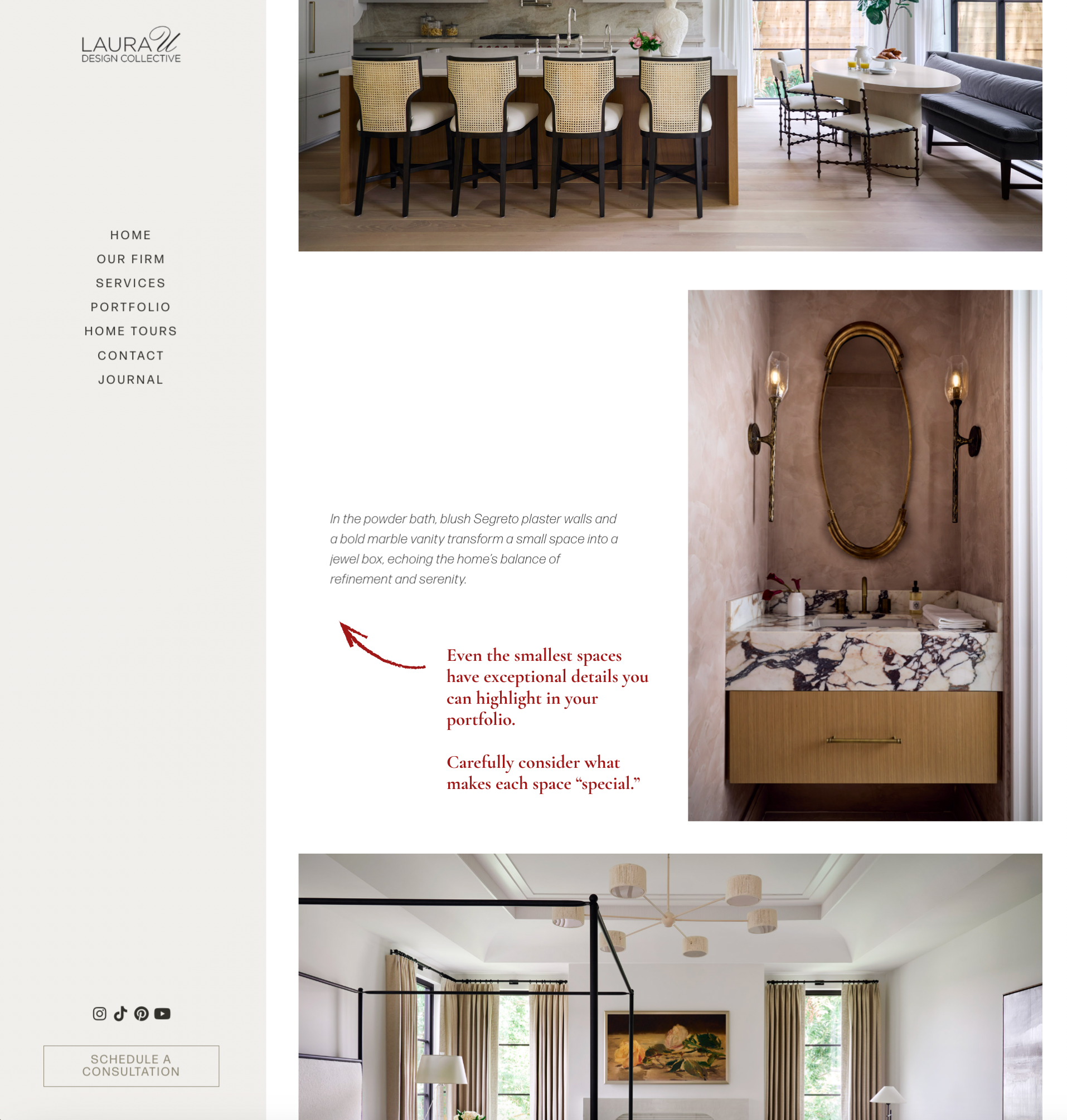
You might be looking at your portfolio and thinking, “These are not huge projects.” That’s fine! Plenty of strong studios began with modest rooms, partial remodels, or projects where the designer had to stretch an impossibly tight budget. The size of these projects is not the problem. The silence you maintain around them is.
Small projects need context. Without it, they can look generic. But with it, they can attract the right clients.
You can talk about what the space looked like when you arrived and how the client used it. You can walk someone through the problem you were hired to solve, like a family kitchen with an awkward traffic pattern or a formal dining room the client never used and wanted to transform. Once you explain the starting point, the result makes a lot more sense. You can talk about the tradeoffs the client faced and how you helped them prioritize. You can talk about the constraints that shaped the project and which decisions mattered most.

A clear explanation of a small project often reveals far more about your skill than a large project where the budget absorbed absolutely every inconvenience. Not everyone can guide a client through realistic limitations with confidence, kindness, and practical decision-making.
Once you start talking about your work this way, you’ll see even the smallest projects as evidence of your ability rather than a placeholder for something better.
Remember, the Portfolio You Build Later Will Define Your Practice
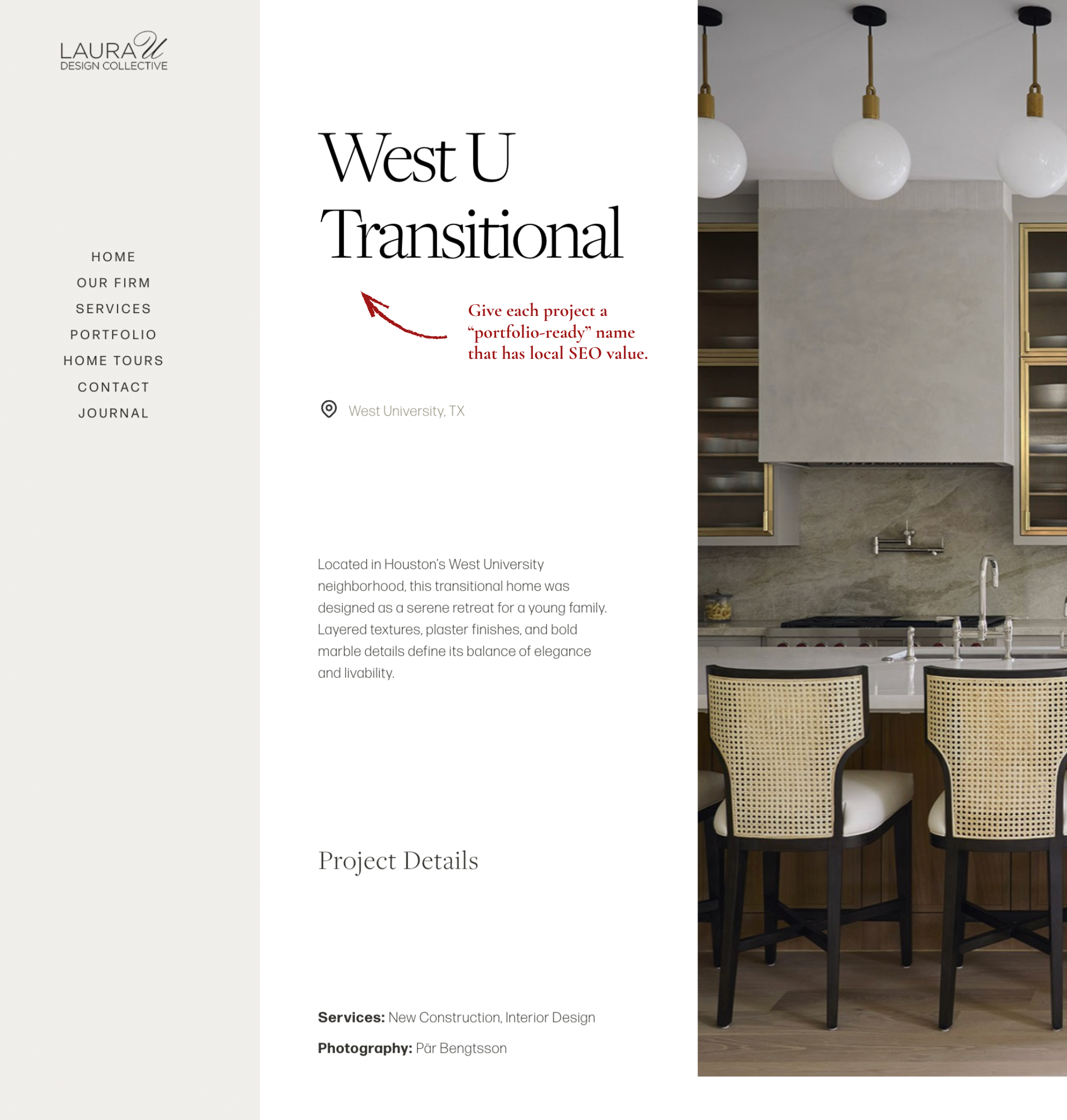
The projects that shape a studio’s long term identity tend to happen after the studio is formed. This is natural; many of us take what we can get in the early days of our firms’ development. Or we use photos of projects we contributed to at our boss’s firms. As your firm grows up, you will be able to choose work more intentionally. You will take on clients who align with your perspective. You will photograph your projects more consistently. You will make decisions with a stronger sense of direction. All of that will create a portfolio that feels much more unified over time.
If you wait for your portfolio to feel perfect, you may delay opportunities that are already within reach. Which of us has felt truly ready to strike out on our own? None. Take the leap. Design a business you love.




